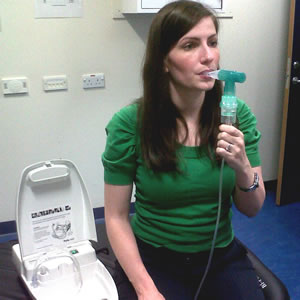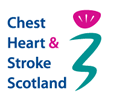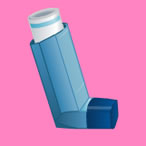
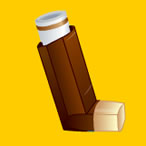
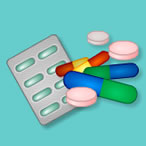
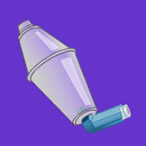
Inhaled medicines are used to help treat symptoms of breathlessness in COPD. Inhalers come in all different styles, shapes and sizes. They may be aerosol inhalers or single dose capsules loaded into an inhaler device. See our Practical guide to inhalers section on this website for more information.
Some people who have difficulty using an inhaler may be advised to use a spacer device. This is a plastic balloon like container which your inhaler fits on to. You shake your inhaler, attach it to the spacer and as normal breathe out. Place your lips around the spacer mouthpiece, and spray the inhaler into the spacer using your recommended number of “puffs”. You can then take several breaths to get all of the inhaler medication in to your lungs. This is useful for people who have poor hand coordination or who find it difficult to coordinate the single inhaled breath and the use of the inhaler at the same time.
Some of these medicines are the same as those used for asthma.
Not all medication is taken by inhalation. Tablets are used, for example, oral steroids or antibiotics for exacerbations or flare ups of COPD or capsules which help reduce the mucus produced in COPD, which can be troublesome for some people.
Understanding and using your medicines and inhalers is one key part for self managing your COPD effectively. If you are not sure about any aspect of your medication, speak to your health care professionals who can help
![]() Keep a written plan in an agreed place (e.g. beside the nebuliser) of what to do in case of an emergency and the instructions for using your nebuliser.
Keep a written plan in an agreed place (e.g. beside the nebuliser) of what to do in case of an emergency and the instructions for using your nebuliser.

